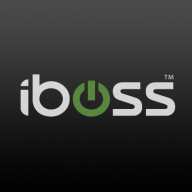

Microsoft Defender for Cloud Apps and iboss are key competitors in cloud security solutions. Microsoft Defender for Cloud Apps has an advantage in environments deeply integrated with Microsoft technologies due to its comprehensive offerings and seamless integration.
Features: Microsoft Defender for Cloud Apps offers integration with Microsoft solutions, robust threat detection, and shadow IT management, providing detailed visibility and security across platforms. Iboss is noted for its network security features, including real-time traffic analysis and SSL inspection, as well as its effective integration with third-party solutions and comprehensive data loss prevention capabilities.
Room for Improvement: Microsoft Defender for Cloud Apps needs better integration with non-Microsoft services, pricing simplification, and faster data processing. Iboss could enhance feature parity with competitors and improve endpoint integration and threat reporting.
Ease of Deployment and Customer Service: Microsoft Defender for Cloud Apps offers flexible deployment in hybrid and public clouds but gets mixed reviews for customer support. Iboss performs well in public and private cloud deployments, earning positive feedback for its straightforward implementation and supportive customer service.
Pricing and ROI: Microsoft Defender for Cloud Apps is pricey as a standalone product but offers value when bundled with Microsoft 365 licenses, enhancing security and reducing downtime. Iboss is appreciated for its transparent and competitive pricing, delivering cost-effective network protection and satisfactory ROI.


iboss offers a comprehensive security platform designed for diverse use cases such as web filtering, data loss protection, corporate proxy services, and URL filtering.
iboss integrates advanced features to address dynamic security needs, leveraging its strength in SASE, ZTNA, AI initiatives, and cloud integration, while ensuring seamless operations for remote work. It excels in historical forensics, malware protection, and flexible cloud deployments. Users benefit from comprehensive traffic scanning, robust malware detection, and PaaS capabilities that reduce hardware management. An intuitive admin console ensures efficient management with content filtering and low false positives. SSL decryption enhances security, while DLP protects data in AI conversations. Deployment is rapid and scalable, allowing effortless integration with emerging technologies.
What features does iboss offer?
What benefits and ROI should users consider?
iboss finds significant application in sectors such as education, where web filtering for K-12 is crucial, and in corporate environments requiring robust proxy services and URL filtering for network security. Its adaptability is essential in scenarios demanding flexible, decentralized security frameworks, particularly for remote work setups.
Microsoft Defender for Cloud Apps is a comprehensive security solution that provides protection for cloud-based applications and services. It offers real-time threat detection and response, as well as advanced analytics and reporting capabilities. With Defender for Cloud Apps, organizations can ensure the security of their cloud environments and safeguard against cyber threats. Whether you're running SaaS applications, IaaS workloads, or PaaS services, Microsoft Defender for Cloud Apps can help you secure your cloud environment and protect your business from cyber threats.
Reviews from Real Users
Ram-Krish, Cloud Security & Governance at a financial services firm, says that Microsoft Defender for Cloud Apps "Integrates well and helps us in protecting sensitive information, but takes time to scan and apply the policies and cannot detect everything we need".
PeerSpot user, Senior Cloud & Security Consultant at a tech services, writes that Microsoft Defender for Cloud Apps "Great for monitoring user activity and protecting data while integrating well with other applications".
Simon Burgess,Infrastructure Engineer at SBITSC, states that Microsoft Defender for Cloud Apps is "A fluid, intelligent product for great visibility, centralized management, and increased uptime".
We monitor all Cloud Access Security Brokers (CASB) reviews to prevent fraudulent reviews and keep review quality high. We do not post reviews by company employees or direct competitors. We validate each review for authenticity via cross-reference with LinkedIn, and personal follow-up with the reviewer when necessary.